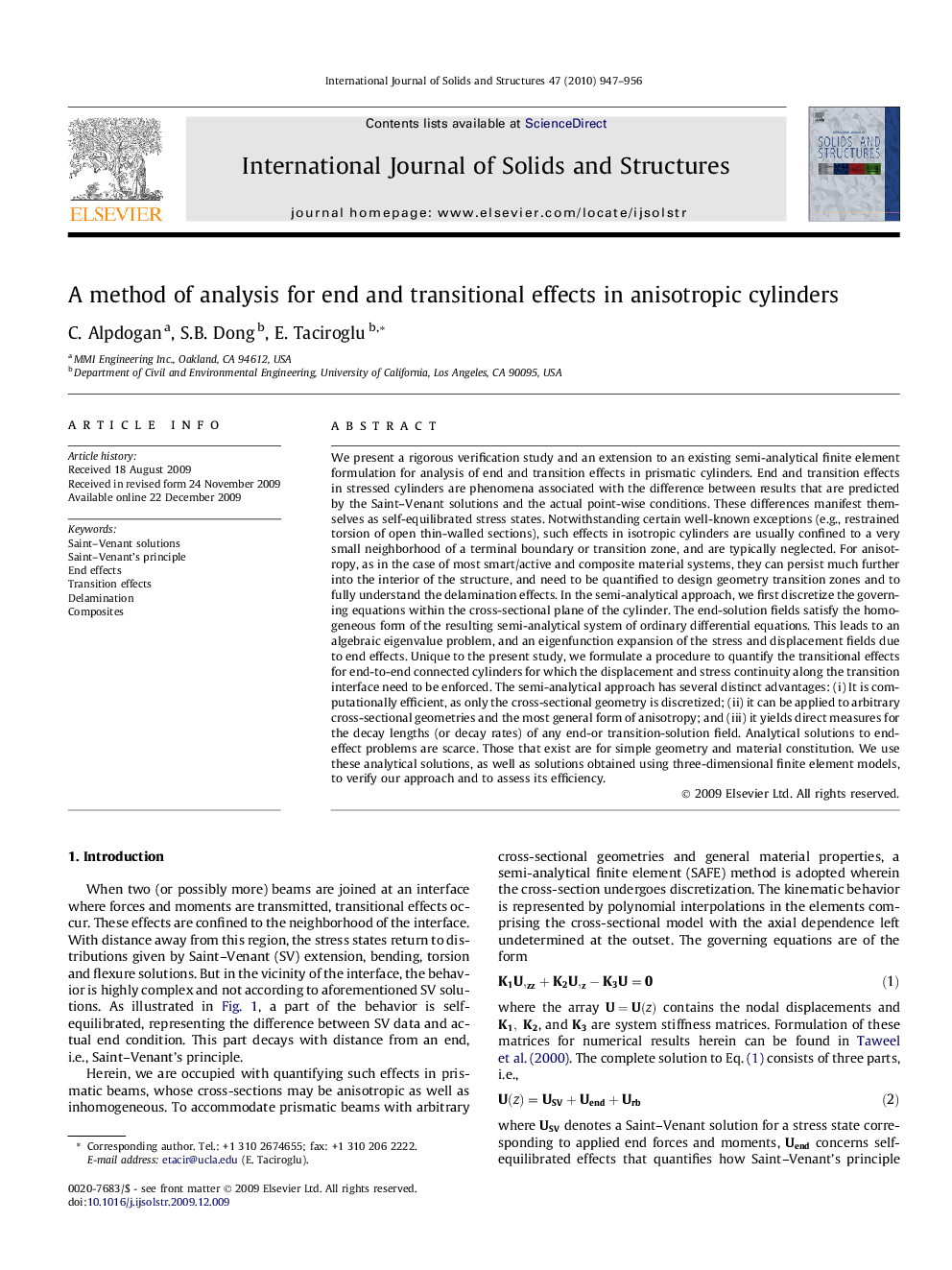| کد مقاله | کد نشریه | سال انتشار | مقاله انگلیسی | نسخه تمام متن |
|---|---|---|---|---|
| 278688 | 1430319 | 2010 | 10 صفحه PDF | دانلود رایگان |

We present a rigorous verification study and an extension to an existing semi-analytical finite element formulation for analysis of end and transition effects in prismatic cylinders. End and transition effects in stressed cylinders are phenomena associated with the difference between results that are predicted by the Saint–Venant solutions and the actual point-wise conditions. These differences manifest themselves as self-equilibrated stress states. Notwithstanding certain well-known exceptions (e.g., restrained torsion of open thin-walled sections), such effects in isotropic cylinders are usually confined to a very small neighborhood of a terminal boundary or transition zone, and are typically neglected. For anisotropy, as in the case of most smart/active and composite material systems, they can persist much further into the interior of the structure, and need to be quantified to design geometry transition zones and to fully understand the delamination effects. In the semi-analytical approach, we first discretize the governing equations within the cross-sectional plane of the cylinder. The end-solution fields satisfy the homogeneous form of the resulting semi-analytical system of ordinary differential equations. This leads to an algebraic eigenvalue problem, and an eigenfunction expansion of the stress and displacement fields due to end effects. Unique to the present study, we formulate a procedure to quantify the transitional effects for end-to-end connected cylinders for which the displacement and stress continuity along the transition interface need to be enforced. The semi-analytical approach has several distinct advantages: (i) It is computationally efficient, as only the cross-sectional geometry is discretized; (ii) it can be applied to arbitrary cross-sectional geometries and the most general form of anisotropy; and (iii) it yields direct measures for the decay lengths (or decay rates) of any end-or transition-solution field. Analytical solutions to end-effect problems are scarce. Those that exist are for simple geometry and material constitution. We use these analytical solutions, as well as solutions obtained using three-dimensional finite element models, to verify our approach and to assess its efficiency.
Journal: International Journal of Solids and Structures - Volume 47, Issues 7–8, April 2010, Pages 947–956